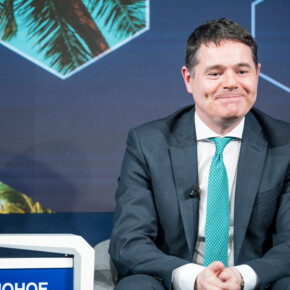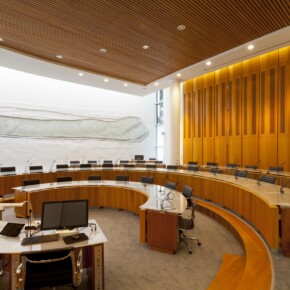Audi looking to the future
Dublin People 23 Jan 2015AUDI, a leading and driving force in all technology areas relating to electronics and electrics, made a splash with a host of new technologies at the Consumer Electronics Show (CES) in Las Vegas.
Audi’s presence at the event centered on the car’s communication with its surroundings. Focus topics included piloted driving, new Audi connect solutions, new infotainment modules, control and display concepts and new developments in lighting technology.
Highlights included the hybrid-powered Audi prologue piloted driving concept car and the interior model of the new Audi Q7.
The driver assistance systems make driving more pleasant, safer and efficient. They are available in almost all of Audi’s model lines. Debuting in the Audi Q7, to be launched in 2015, are groundbreaking solutions such as the Predictive Efficiency Assistant, the Trailer Assistant and adaptive cruise control including a congestion assistant.
Audi will introduce its new technologies for piloted driving before the end of this decade. These can take over driving in certain situations if the driver wishes them to do so. Audi has been performing pioneering work in this area for years and shown how thrilling piloted driving can be.
In October 2014, the Audi RS 7 piloted driving concept lapped the Grand Prix circuit at Hockenheim at speeds up to 240 km/h with no driver on board, making it the sportiest piloted driving car in the world.
Audi has presented its solutions for piloted driving and driving in congested areas at CES in previous years. At this year’s CES, the brand set another milestone with the Audi A7 piloted driving concept featuring a wide range of standard and close-to-standard sensors, which drove from Stanford in Silicon Valley via Bakersfield to Las Vegas, a 900km drive.
Audi has also been a leader in automobile lighting technology for years. Groundbreaking innovations available in several current model lines include matrix LED headlights for intelligent and flexible illumination of the road surface as well as dynamic turning signals.
Another world first is the laser highbeam available in Audi’s high-end R8 LMX edition model. Its range is more than 500 feet. At CES, Audi will introduce Audi Matrix laser technology as the next step, a laser light providing high-resolution and finely tuned illumination of the roadway ahead. Another innovation is construction area lighting. This projects two markedly bright light strips onto the road, thus visualising the car’s width.
Additional services will be available in the new Audi Q7, among them the Audi smartphone interface. Depending on whether a customer connects an iOS or an Android device, the interface will call up the Apple Car Play or Android Auto platform onto the car’s MMI monitor. At the core of the offering is an enormous selection of music titles. In addition, both platforms provide navigation and messaging functions and appointment reminders. Future car to X technologies are another key element of Audi connect. These will enable Audi models to interact with traffic lights in a city to navigate traffic faster and more efficiently. Another solution will permit cashless payment in a parking garage or at a kerbside meter. A third one will identify speed limits, spot dangers and also relay the corresponding information to other cars.
A further innovation presented by Audi at CES was the Audi mobile key. Here, a smartphone or a smartwatch provides access to the vehicle, making them highly flexible complements to existing keys.
The mobile key uses Near Field Communication (NFC), which is available even when the mobile device’s battery is empty.











